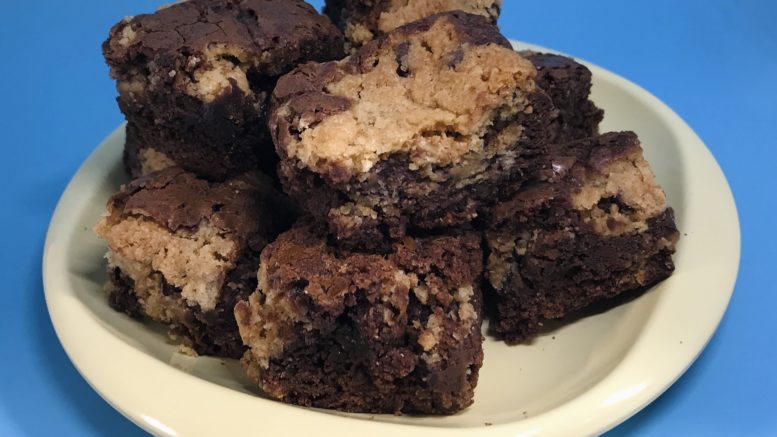Smoking cannabis is not recommended by the CDC,
low-dose edibles are its smokeless replacement
The coronavirus pandemic has inspired cannabis users to reevaluate the risks of smoking and look for safer ways to enjoy their stay-at-home high. Because COVID-19 is a respiratory disease, any inflammation of the airways caused by smoking weed would complicate a full recovery.
So many are turning to edibles as the best alternative to get high, but stay healthy. Edibles create a different high than smoking pot, more of a relaxing body high.
Edibles, however, can be expensive to purchase. Since we’re all stuck inside for a while longer, now is a great time to bake a batch of homemade edibles for a fraction of the dispensary cost. Cannabis flowers and cannabis concentrates can be turned into a basic canna butter or canna oil, and easily added to any recipe that calls for one of those two ingredients.
Decarboxylation
The key to any successful edible starts with decarboxylation, a heating process that prepares the cannabis. Also called “decarbing,” this first step enhances the THC’s active properties.
There is reasonable disagreement on how much heat to use and how long it should take. So SN&R asked local edibles maker Xena, from Apothecary 36. Xena didn’t wish to give a last name, but shared some excellent advice.
The key to any successful edible starts with decarboxylation, a heating process that prepares the cannabis for use.
Concentrates such as shatter, live resin and crumbles are a good choice for making edibles because they blend well with cooking oil.
“I use a digital induction crock pot,” Xena said. “I set the temp to 100 degrees [F] and add my concentrate to the pan. You can use a digital laser thermometer to check the pan temperature. Bring the oil temp up 10 degrees every one minute. After 12 minutes, you should be at 220 degrees. At this point, immediately remove heat source and add your measured amount of cooking oil to the hot concentrate. This will make removing the oil simple.”
To decarboxylate cannabis flower, cook the dry plant matter on a cookie sheet at 220 degrees F for 90 minutes. This is going to stink up the kitchen, so consider doing it in a toaster oven outside.
Cannabis concentrate brownies
I used a Betty Crocker Supreme Cookie Brownie Bar mix. Betty Crocker has more than a dozen brownie and bar mixes that call for cooking oil. A deeper 8-by-8-inch Pyrex pan allows the baking temperature to come down 25 degrees, from 350 to 325 degrees F. To jazz things up, try adding chopped walnuts or shredded coconut to the mix. For more cake-like brownies, add an extra egg.
Cannabis butter and Rice Krispies treats
To make canna butter, combine one stick of butter, some decarboxylated cannabis and a cup of water into a crock pot and set it on low for several hours, until the water boils out. To make sure the water is completely gone, set the pot inside a refrigerator so the butter will separate from any remaining water. Now the cold canna butter can be scraped out and used with any recipe that calls for butter.
Kellogg’s Rice Krispies treats have been a popular edible choice for decades, partly because the sweetness and marshmallow flavor dampen down the cannabis taste. The original recipe calls for only three ingredients (marshmallow, butter and cereal) and is printed on every cereal box. To get creative with colors and flavors, add in chocolate chips, toffee bits or a colorful cereal.
Cannabis/alcohol tinctures
If the idea of cannabis-infused alcohol sounds intense, that’s because it is. Here’s an important warning: Tinctures are something to take by the teaspoon, not the shot glass. One can easily overdose and lose control.
Tinctures begin with at least 150-proof alcohol. Higher alcohol content dissolves the THC more effectively. Most people use Everclear, which is 190 proof. But absinthe or Bicardi-151 rum also works well. When finished, this tincture is still going to taste like hell, but I have found absinthe to be easier to tolerate.
To make a tincture, put one quarter ounce to a full ounce of decarboxylated cannabis into a quart-sized mason jar full of alcohol. Shake it and let it sit for a long time. That’s it.
A decent tincture can still be made in as little as three hours.
Old connoisseurs insist that the best tinctures mellow for as long as one year. Other recipes call for 10 days or a couple of months. But a decent tincture can still be made in as little as three hours. Keep the jar in the freezer during the wait time. It helps cannabinoids separate from the plant more easily. Don’t forget to take out the jar and shake it a few times during the process.
Once the tincture is ready, separate out the wet plant matter by pouring everything through cheesecloth (sometimes two screenings are needed). Pour the remaining liquid into smaller containers.
Proper dosages
Edibles do not take effect immediately, the way smoking a pre-roll does. They can take as long as two hours to kick in. Many have overdosed by thinking the product was weak and taking another nibble too early.
That’s why it is very important to know your tolerance level. Mine is high, but my wife’s isn’t. She once overdosed on 25 milligrams of canna granola and had to sweat out her altered reality for almost a full day. An overdose will cause no physical harm. But it is not uncommon for someone to suffer extreme anxiety, or even think they died during an edible overdose.
It is very important to know your tolerance level. Mine is high, but my wife’s isn’t.
To determine a proper dose of any cannabis-infused product, start with small amounts the first time and wait for the effects. An easy-to-remember guide is “go low and slow,” increasing portions little by little, until reaching the desired effect.
CBDs can be very helpful in alleviating any anxiety that comes with an edible overdose.
But the best medicine is to prevent the overdose entirely. So, once again, be careful with these recipes. These days, first responders and hospital emergency rooms don’t have time to deal with someone who simply ate too many brownies or Rice Krispies Treats.






Be the first to comment on "Stay-at-home high"